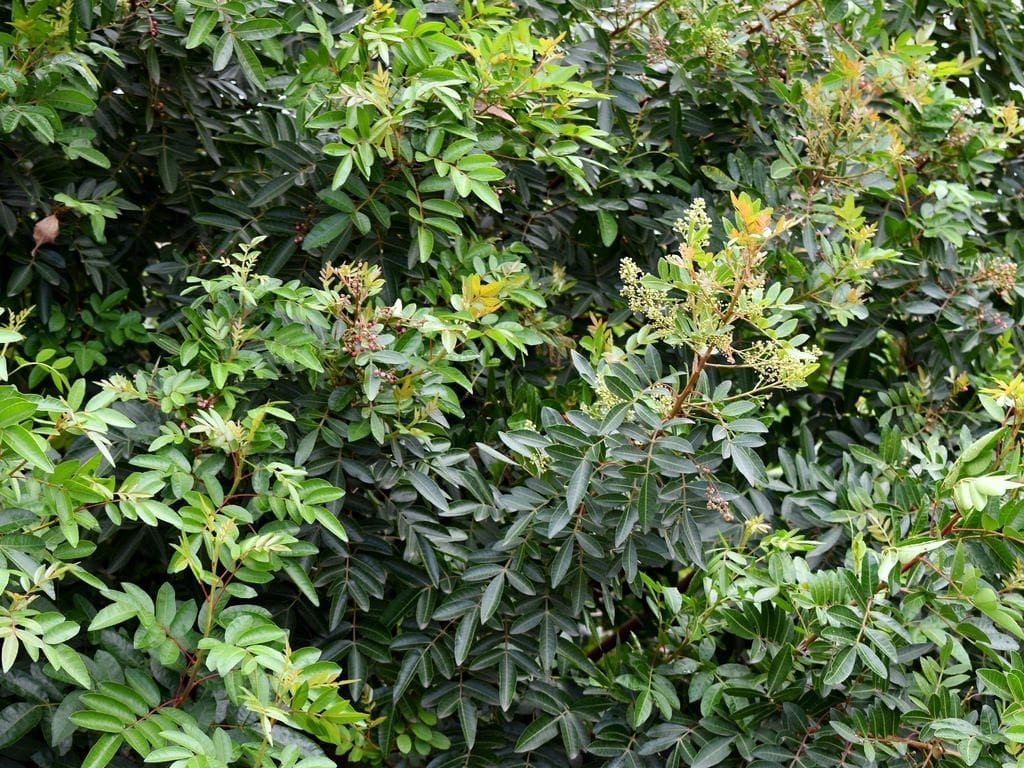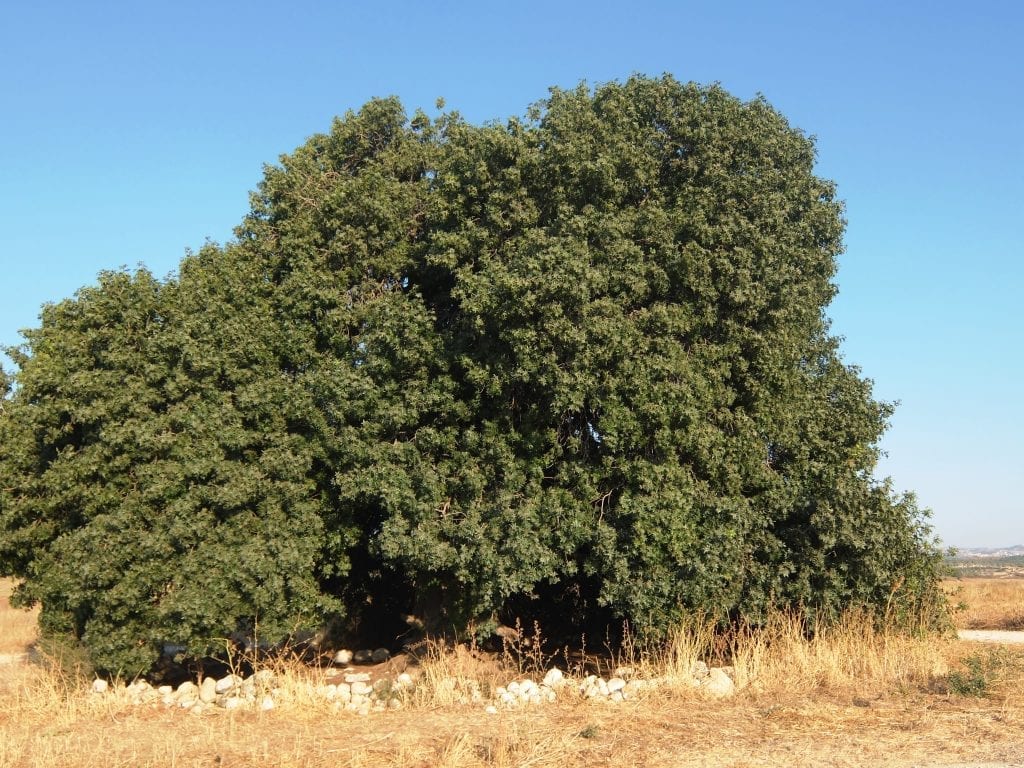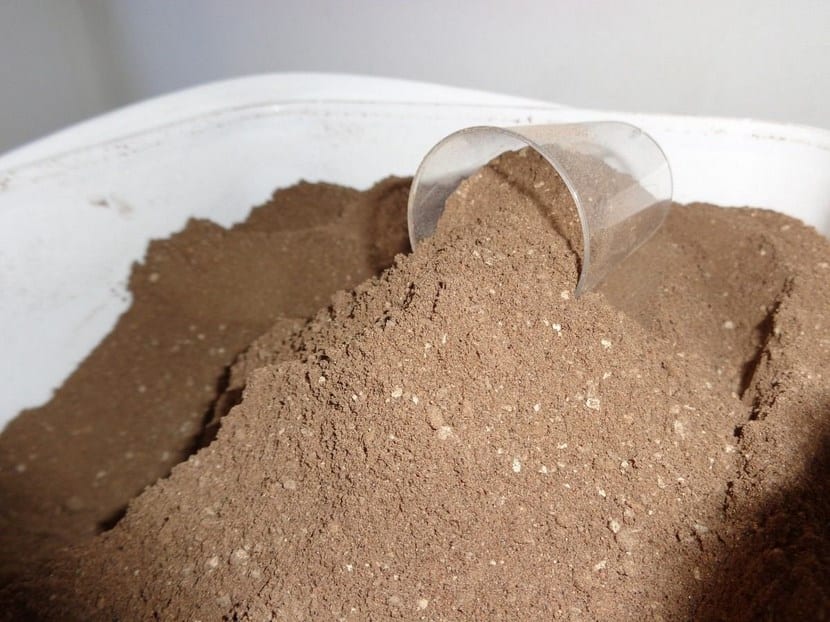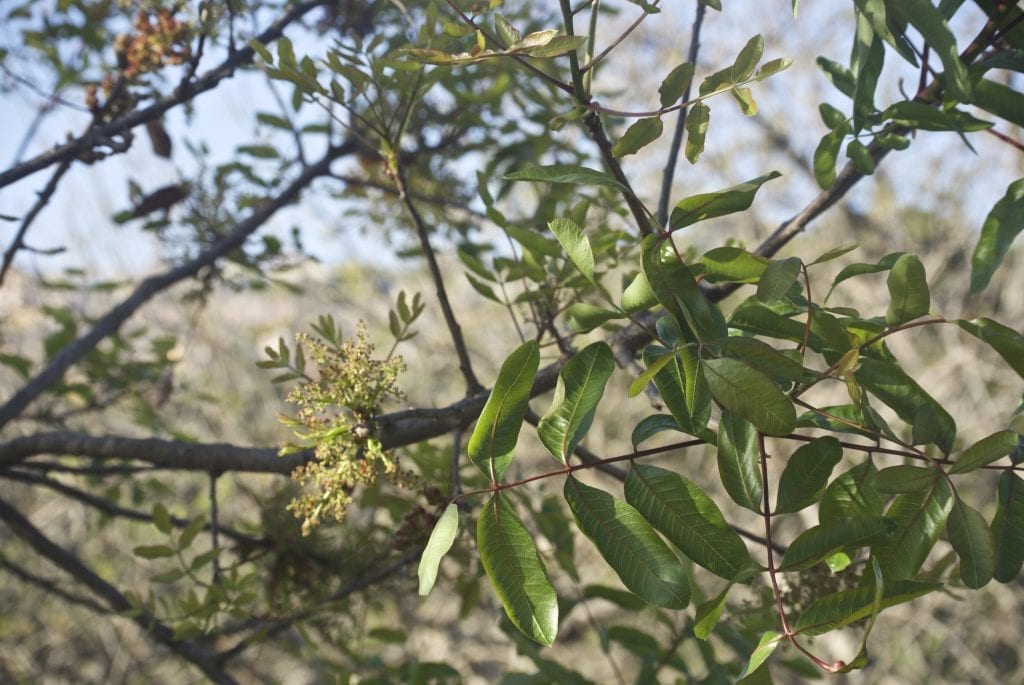
You may know the mastic, a very drought-resistant shrub that grows in the Mediterranean region. Well, the plant that I am going to present you next is related to him, although few would say so because of its height. And it is that while the lentiscus pistachio It is a shrub that does not usually exceed 2 meters, our protagonist can reach heights of up to 12 meters.
In addition, it gives very good shade, and the best thing is that it resists drought without problems. So if you need a tree that can take care of itself practically, don't hesitate: discover the Pistacia atlantic.
Origin and characteristics

Our protagonist it is a deciduous tree -It loses its leaves in autumn / winter- native to North Africa, the Canary Islands, and Eurasia, whose scientific name is Atlantic Pistacia. It is popularly known as almácigo, and it is a flat that reaches between 8 and 12 meters, with a trunk that can reach 1m in diameter at 200 years of age. It can live for more than 1000 years.
The cup is thick and tangled, composed of oval leaves, shiny on the upper side, bright green, and odd-pinnate. The flowers appear grouped in clusters, and there are some that are female and others that are male in different specimens. The fruit is rounded, less than 1cm in diameter, and bluish when ripe.
What are their cares?

If you want to have a copy, we recommend that you provide it with the following care:
Location
La Atlantic Pistacia it has to be outside, in full sun. Likewise, it is important that it is placed as far as possible - at least ten meters - from pipes, paved floors, etc.
Earth
- Flower pot: universal culture substrate mixed with 30% perlite. You can get the first here and the second here.
- Garden: it is indifferent as long as it has good drainage. In the event that you do not have it, it is necessary to make a planting hole of at least 1m x 1m, and mix the soil that has been removed with perlite, in equal parts.
Irrigation
As we anticipated at the beginning, it is a tree that resists drought well. Now, during the first year and if it is grown in a pot, it must be watered so that it can grow well:
- Land: during the first twelve months it should be watered at least 2 times a week in the warm season, and somewhat less the rest of the year. From the second year on, the risks can be increasingly spaced.
- Flower pot: water about 2 times a week, except in autumn-winter when 1 / week will suffice. However, if in doubt, check the substrate moisture in any of these ways:
- Insert a thin wooden stick to the bottom: if it comes out practically clean, it will mean that the substrate is dry and that, therefore, it has to be watered.
- Weigh the pot once it is watered and again after a few days: as the wet substrate weighs more than the dry one, this difference can serve as a guide to know when to water.
- Use a digital humidity meter: when you enter it, it will automatically tell you what degree of humidity is that portion of the substrate that has come into contact with it. Of course, to be more accurate you must introduce it in other areas (further from the plant, closer).
Subscriber

Guano powder.
As important as watering -even if it is very occasionally 🙂 - is the subscriber, since the Atlantic Pistacia, although it is very resistant, you will appreciate a monthly contribution of ecological compost. Therefore, I advise to pay with guano, as it is very nutritious, easy to find and inexpensive. For example, you can buy it here in liquid (ideal if you are going to have it in a pot) and here powdered.
Multiplication
La Atlantic Pistacia multiplies by seeds in spring following this step by step:
- The first thing to do is put the seeds in a glass of water for 24 hours.
- The next day, a seedbed must be filled with universal culture substrate mixed with 30% perlite (it can be a flowerpot, a seedling tray, milk containers or glasses of yogurt that you have or that you can make some holes for drain).
- Then, it is watered thoroughly, so that the substrate is well soaked.
- Next, the seeds are sown, trying not to put too many or too close together. To have more or less an idea of how many you have to put, say that you do not put more than 3 if the pot is about 10,5cm in diameter.
- Finally, they are covered with a thin layer of substrate, and irrigated again with a sprayer.
Thus, the seeds will germinate in about two months.
Plagues and diseases
It's very tough. It does not usually have problems, but if it is watered in excess it will affect the mushrooms, which are treated with fungicides.
Rusticity
Withstands cold and frost up to -12ºC.

What did you think of Atlantic Pistacia? Did you know her?